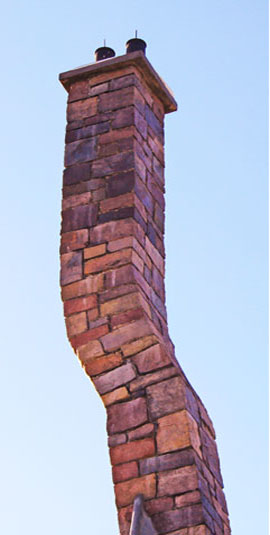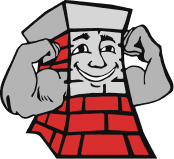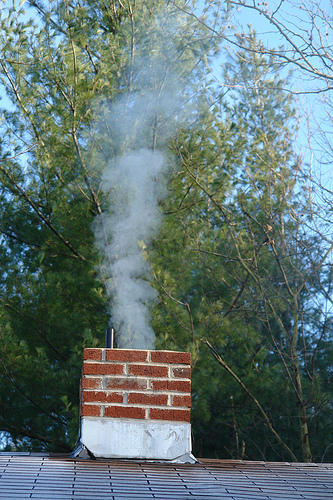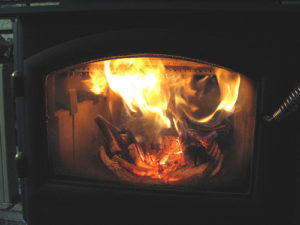Possible Reasons for Drafty Fireplace Woes
Does your home smell like smoke because of a drafty fireplace or wood stove? This is one of the most common chimney woes that people deal with, and there are many possible causes of the problem. A professional chimney sweep knows just what to look for, but you can possibly determine the root of the issue with the following information.
Blockage
The flow of air in a chimney can become hampered, which can cause smoke to billow into your home instead of going up the chimney. Among the common causes of blockage are creosote in the chimney cap screen, creosote in the flue lining, dampers which aren’t fully opened, broken pieces of masonry chimneys, and birds’ nests.
The National Fire Protection Association recommends getting your chimney cleaned and inspected by a professional at least once annually, but frequent use of a fireplace or wood-burning stove may necessitate more frequent cleaning. The creosote in your chimney will build up more quickly if you burn green wood, which is not recommended.
Airflow
If your home is sealed too tightly, it may not allow adequate airflow up the chimney. Experiment by opening a window near the fireplace just a crack; if the smoke then begins going up the chimney, you’ll know that what’s probably needed is an outdoor air supply. Most commonly, inadequate airflow is caused by exhaust fans on other appliances or by a stack effect. The stack effect, in simplest terms, involves the flow of air in and out of a building.
Chimney Size

If the chimney is too tall, this could create an airflow issue within the chimney. Are you wondering if this is a real chimney? Well, maybe if you are at the Wizarding World of Harry Potter in Orlando it is real!
There are guidelines for chimney height provided by The National Fire Protection Association (NFPA), but the suggested heights are considered by experts to be absolute minimums. The height of the chimney could be creating backdrafts. There are different factors which affect how much air is potentially pushed down the chimney, such as nearby obstacles. A chimney could be so high that drafts are significantly increased.
Sometimes a chimney is the wrong size for a wood-burning appliance, an issue which won’t come up if installed by a one of our professionals. The general guideline is that the chimney should have the same diameter as the appliance’s flue outlet.
A chimney that’s too small can affect the draft, since the smoke doesn’t have adequate space to be carried outside as it should.
The chimney can be too large, and the flue outlet on an appliance is also the guide to determining whether it is. The chimney shouldn’t be more than twice the cross-sectional area of the appliance’s flue outlet. For instance, a stove that has a collar that is 6 inches in diameter shouldn’t have a chimney greater than 8 inches in diameter. An oversized chimney causes the gases in the flue to cool, which creates a draft in the home.
A professional chimney sweep can help you determine whether your chimney is creating a back draft because of some type of issue with size.
Flue Temperature
If the air in the flue is too cold, the chimney draft can be adversely affected, since hot air rises, pulling smoke out of your home. This problem is most common with exterior masonry chimneys which lose a significant amount of heat and therefore cool the combustion gases, causing them to sink instead of rise.
Wind Patterns
Wind usually increases chimney draft. But in some situations, such as on an ascending roofline, rising winds can create back puffing. Sometimes a chimney cap will deflect rising winds into a chimney.
Leakage
If there is any significant leakage in the chimney’s lower half, overall draft will be reduced. Joints in stovepipe connectors aren’t usually a cause of a loss of draft, but it can happen. Check to be sure that cleanout doors are shut, and look for signs of significant deterioration.
The solution to a drafty fireplace or wood stove could be expensive, depending on what is causing the problem. But no matter what the cause, resolving it is essential. In addition to the unpleasantness of having a home with a smoky smell, breathing smoke fumes is hazardous to your health. Call one of our professionals for help in preventing constant backdraft from your fireplace, one of the most common and frustrating chimney woes.




